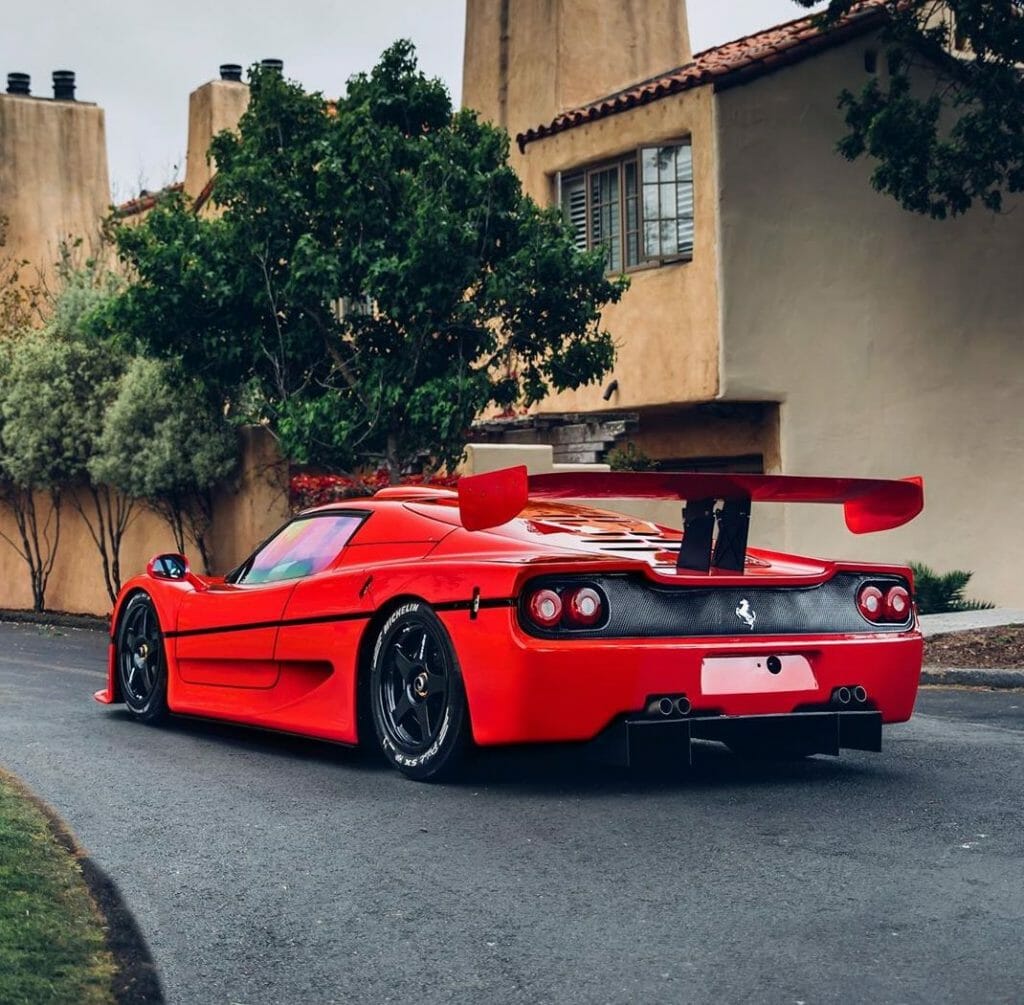If you have a car which a) was made by Ferrari and b) is rare, you have a unique and rare car which by definition is almost guaranteed to increase in value. One example of this is the Ferrari F50 GT – sometimes referred also as GT1 – of which only 3 cars were ever produced. Here’s why:
As is often the case, the homologation process was the main reason for the development of the F50 GT but it was also the reason why the project was discontinued despite the fact that factory test driver, Nicola Larini, completed impressive lap times with the 750-PS racing car – even faster than the 333SP Le Mans prototype.
Ferrari had previously equipped wealthy collectors/private teams with the powerful F40 GTE for the BPR Global GT long distance series (the predecessor of the FIA GT Championship racing series). Against the McLaren F1, however, even the racing version of the F40 could not do too much. And when Mercedes-Benz returned to the track with the CLK-based mid-engine racing car, things looked even worse.
Ferrari decided to use the new and limited super sports car F50 as a new homologation basis. They wanted this car to follow the F40 GTE as the engine already fit perfectly to the chassis. The F50 was going to be the perfect racing car.
Ferrari F50 GT
The Italian car manufacturer began by taking a “normal” Ferrari F50 and started experimenting with it. As a result, the performance of the Ferrari 333 SP’s derivative 5.0-liter V12 engine increased by over 200 hp – 739 hp in total. In addition to the very low center of gravity and lightweight aluminum rims, a sequential six-speed transmission with carbon gearshift reduced the weight by around 200 kilograms. With this, a beast was born as the Ferrari F50 GT began setting new records on the test track in Maranello. It was never officially confirmed but the F50 GT was benchmarked with a 0-100 km/h (0-60 mph) time of 2.9 seconds and a top speed of 380 km/h (236 mph).
But, nevertheless, the project was stopped. The reason? Homologation again. Cars that competed in the GT1 class were usually based on heavily modified road models (just as the F50 GT was) but Porsche had found a loophole in the rules. Due to a small change in regulation, Porsche, McLaren and Mercedes were suddenly able to build incredibly expensive “Evolution” models as a modification of their roadworthy racing cars. For example, the Germans created a purpose-built racing car, the 911 GT1, and produced a limited run of extreme road-legal supercars. This was a big advantage for them as Ferrari based its GT1 car on the street-legal version of the F50 and not the other way around. All the engineering and R&D spent on the Ferrari F50 GT was for nothing. And with that, the project was done…
…done in terms of racing, but not for car collectors. Of the six chassis produced, only three were completed. The rest was destroyed to prevent anyone benefiting from Ferrari’s research and development. The three complete vehicles were sold to the company’s best customers under the strict condition that they must never be used for racing purposes.
The F50 GT never got to race like its predecessors of the F40 racer models. Today the car is a real-life legend and leaves a lot of open questions to remind the world of what could have been.
Summary
Brand:
Ferrari
Model:
F50 GT
Price:
The Italian car manufacturer never unveiled how much it cost to develop the F50 GT and the actual figure remains a mystery to this day. Although all 3 cars were sold, the price was never disclosed. In 2000 Chassis number 002 was auctioned for USD 1.43 million. It’s hard to put a price tag on such a unicorn more than 20 years later but, if we had to, The Collectors Circle would estimate it to be approximately USD 10-13 million.
Limitation:
Three cars
When to drive:
Probably to a car event from the Supercars Owner Circle (most recently held in Andermatt, Switzerland)
What we love about the car:
The car was created in 1996 – 23 years ago – and was accelerating from 0-100 km/h (0-60 mph) in only 2.9 seconds. Yes, it is a racing car, but it’s still jaw dropping.
Images: Alex Penfold & Ferrari Website


